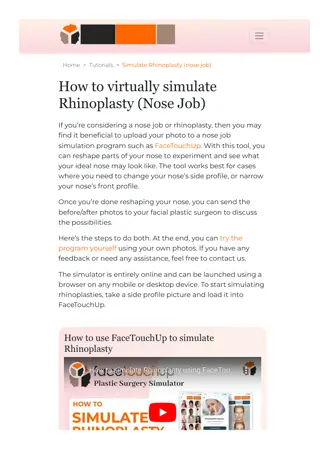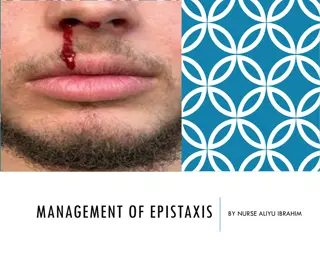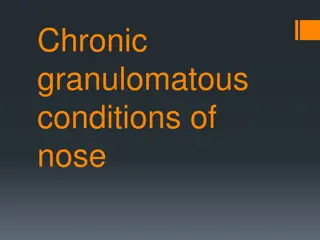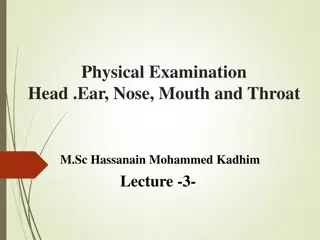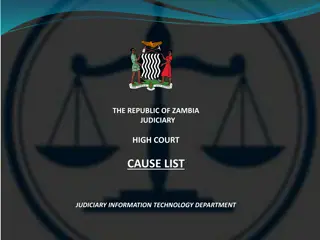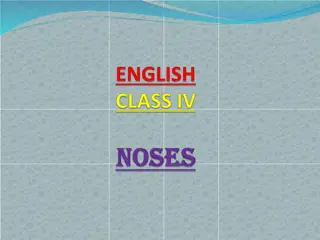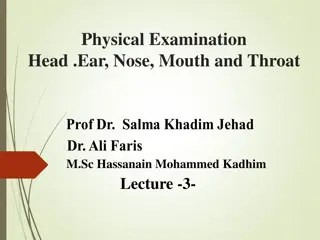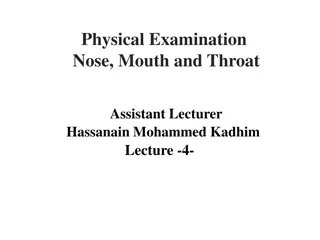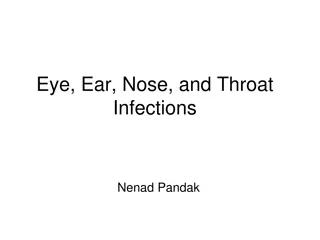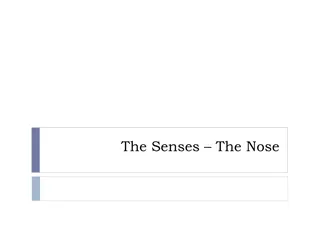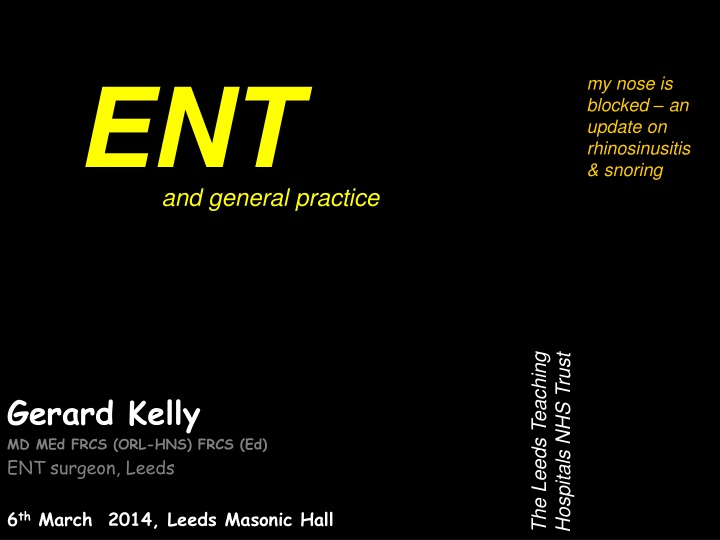
Rhinosinusitis and Snoring: Insights from Leeds Teaching Hospitals
Explore the update on rhinosinusitis and snoring by ENT surgeon Gerard Kelly at Leeds Teaching Hospitals. Learn about common EN(T) conditions, symptoms, examinations, treatments, and the impact of allergic rhinitis. Discover classifications, guidelines, and management plans for these conditions.
Download Presentation

Please find below an Image/Link to download the presentation.
The content on the website is provided AS IS for your information and personal use only. It may not be sold, licensed, or shared on other websites without obtaining consent from the author. If you encounter any issues during the download, it is possible that the publisher has removed the file from their server.
You are allowed to download the files provided on this website for personal or commercial use, subject to the condition that they are used lawfully. All files are the property of their respective owners.
The content on the website is provided AS IS for your information and personal use only. It may not be sold, licensed, or shared on other websites without obtaining consent from the author.
E N D
Presentation Transcript
ENT and general practice my nose is blocked an update on rhinosinusitis & snoring The Leeds Teaching Hospitals NHS Trust Gerard Kelly MD MEd FRCS (ORL-HNS) FRCS (Ed) ENT surgeon, Leeds 6thMarch 2014, Leeds Masonic Hall
aims give an overview of common (E)N(T) conditions shows some example cases refine our thinking of ENT problems
objectives list the main symptoms in nose conditions relate each symptom to one condition list the ways to examine the nose identify an nasal polyp classify rhinosinusitis list 6 treatments for chronic rhinosinusitis (CRS) define association with CRS & respiratory disease list treatments for nasal polyps formulate a management plan for snoring
first though... history and examination in ENT
Allergic Rhinitis Epidemiology Allergic rhinitis is the most common form of non- infectious rhinitis At least 500 million individuals world-wide have allergic rhinitis and it is one of the most common reasons for attendance with a primary care practitioner Almost 30% of adults and 40% of children are affected World-wide the prevalence of allergic rhinitis continues to increase References 1. 2. Bousquet J et al. Allergic Rhinitis and its Impact on Asthma (ARIA) 2008 update. Allergy 2008;63 Suppl 86:8-160 Wallace DC et. J Allergy Clin Immunol 2008; 122: S1-84 UK/FF/0108/11 April 2011
Allergic Rhinitis Classification BSACI Guidelines Seasonal (UK) Tree pollen (birch, plane, ash + hazel) Grass pollen (timothy, rye + cocksfoot) Weed pollen ( mugwort + nettle) Fungal spores ( Cladosporium spp, Alternaria spp + Aspergilus spp) British society for allergy and clinical immunology Perennial (UK) House dust mite (Dermatophagoides pteronyssinus) + Animal Dander Occupational Flour, grain, latex, wood dust, detergents UK/FF/0108/11 April 2011
Asthma? Diagnosis of allergic rhinitis consider Intermittent symptoms Moderate Mild oral antihistamine or intranasal antihistamine +/- decongestant or topical nasal steroid or leukotriene antagonist or cromogycate oral antihistamine or intranasal antihistamine +/- decongestant or leukotriene antagonist
Asthma? Diagnosis of allergic rhinitis consider Persistent symptoms Mild oral antihistamine or intranasal antihistamine +/- decongestant or topical nasal steroid or leukotriene antagonist or cromogycate
Asthma? Diagnosis of allergic rhinitis consider Persistent symptoms Moderate severe If better, step down and continue for > 1 month topical nasal steroid oral antihistamine or leukotriene antagonist Review after 2 -4 weeks
Asthma? Diagnosis of allergic rhinitis consider Persistent symptoms Moderate severe If not better, review diagnosis review compliance query infective / other cause topical nasal steroid oral antihistamine or leukotriene antagonist increase nasal steroid ipratropium (rhinorrhoea) decongestant or oral steroid (blockage) Review after 2 -4 weeks
Asthma? Diagnosis of allergic rhinitis consider Persistent symptoms Moderate severe If not better, review diagnosis review compliance query infective / other cause topical nasal steroid oral antihistamine or leukotriene antagonist increase nasal steroid ipratropium (rhinorrhoea) decongestant or oral steroid (blockage) Review after 2 -4 weeks If not better, refer
Common co-morbidities: Asthma Approximately 80% of asthmatics have rhinitis Allergic rhinitis may precede asthma Rhinitis impairs asthma control Treatment of allergic rhinitis may improve asthma control Allergic Rhinitis and its Impact in Asthma (ARIA) promotes assessing everyone with allergic rhinitis for asthma References 1. 2. Bousquet J et al. Allergic Rhinitis and its Impact on Asthma (ARIA) 2008 update. Allergy 2008;63 Suppl 86:8-160 Wallace DC et. J Allergy Clin Immunol 2008; 122: S1-84 UK/FF/0108/11 April 2011
Common co-morbidities: Rhinoconjunctivitis Incidence Ocular symptoms are common Rhinoconjunctivitis symptoms have been reported in more than 75% of patients with seasonal allergic rhinitis Clinical significance Severely impairs QOL Often a forgotten aspect of care Reference 1. Wallace DC et al. J Allergy Clin Immunol 2008; 122: S1-84 UK/FF/0108/11 April 2011
Allergen Avoidance Background Success of intervention measured by clinical improvement Strategy success influenced by individual host sensitivity to allergen Sensitivity differs betweens allergens Effectiveness Studies do not show consistent reduction in symptoms or medication requirements Reference: 1.Scadding GK et al. Clin Exp Allergy 2008; 38:19-42 UK/FF/0108/11 April 2011
allergen avoidance mattress, pillow, duvet covers synthetic duvets, pillows avoid woollen blankets vacuum frequently avoid carpets, curtains keep clothing in cupboards keep animals out of bedrooms low relative humidity boil wash sheet, duvet covers
Nasal Decongestants (oral/topical) Background Relieve nasal congestion Cause nasal vasoconstriction and decreased oedema Topical - risk of rhinitis medicamentosa Side effects Oral - Hypertension Caution with caffeine &other stimulants Topical- Local stinging/burning Nasal dryness Sneezing References 1. Wallace DC et. J Allergy Clin Immunol 2008; 122: S1-84 UK/FF/0108/11 April 2011
Oral Antihistamines Seasonal and perennial allergic rhinitis BSACI guidelines state that regular therapy is more effective than as needed use in persistent rhinitis Reduce sneezing, rhinorrhoea and nasal and ocular pruritis but have less effect on nasal congestion ARIA recommend 2nd generation formulations which cause less sedation References 1. Scadding GK et al. Clin Exp Allergy 2008; 38: 19-42 2. Dykewicz MS. J Allergy Clin Immunol 2003; 111: S520-9 3. Bousquet J et al. Allergic Rhinitis and its Impact on Asthma (ARIA) 2008 update. Allergy 2008;63 Suppl 86:8-160 UK/FF/0108/11 April 2011
Intranasal Steroids ARIA guidelines state that intranasal steroids are the most effective drugs for the treatment of allergic rhinitis Effective in relieving nasal congestion, rhinorrhoea, sneezing and nasal itching Grade A level of recommendation for seasonal and perennial allergic rhinitis Recommended to be administered regularly for optimal benefit References: 1. Bousquet J et al. Allergic Rhinitis and its Impact on Asthma (ARIA) 2008 update. Allergy 2008;63 Suppl 86:8-160 2. Rosenwasser LJ. Am J Med 2002; 113 (9A) 17S-24S 3. Scadding GK et al. Clin Exp Allergy 2008; 38: 19-42 UK/FF/0108/11 April 2011
Intra-nasal steroids Local Side-effects Nasal irritation (propylene glycol/ benzalkonium chloride) Nasal bleeding/crusting Septal perforation (rare advise to use device away from septum) Warn patients Avoidance with correct delivery technique May be related to device induced trauma No evidence of nasal tissue atrophy UK/FF/0108/11 April 2011
Intra-nasal steroids - systemic side effects Second generation INS Minimal absorption from nasal mucosa Up to 80% of intranasal dose swallowed Extensive hepatic first-pass metabolism by cytochrome P450 system Minimal systemic levels No significant HPA suppression or effects on growth References 1. LaForce. J Allergy Clin Immunol 1999; 103: S388-96
Summary Allergic rhinitis is a common disease with a significant clinical and socioeconomic impact Accurate diagnosis and focussed therapeutic intervention is essential Important to diagnose and treat any associated co-morbidities Address factors that improve patient tolerability and compliance with therapy UK/FF/0108/11 April 2011
snoring common
snoring directly related to collar size
snoring BMI evening alcohol male
snoring treatments weight reduction position stopping evening alcohol CPAP MAD surgery
snoring treatments surgery tonsillectomy, nasal polypectomy LAUP U3P sclerosant injection coblation, radiofrequency somnoplasty pillar implants
Nasal septal perforation surgery trauma cocaine use infection post trauma, syphilis Wegener s granulomatosis sarcoidosis idiopathic




